#photoshopcourseinjaipur
Explore tagged Tumblr posts
Text
What is Career Planning, Importance & Major Steps
Having the appropriate job and being in the right place at the right time go hand in hand. Having the career you want is more about career planning than luck, even if hard effort certainly plays a part.
By creating a career plan, you may decide on the path you want to take and then take the necessary action to get there. Furthermore, rather than the other way around, a career plan empowers you to take charge of your professional destiny.
What is career planning?
Career planning refers to the active management of your career and the methodical planning of its future. Your personality, skill set, and ideal function should all be taken into account while planning your career, in addition to the shifting demands of the labor market.
When you plan your career, you choose a path that will fulfill your goals and satisfy your financial, emotional, and otherwise needs. Making better decisions for yourself is the key to living the life of your dreams.
Consider this: a person with a full-time job will work a third of their day at their place of employment for most of their young life. This work may have a negative impact on happiness and health if it is not chosen carefully. Career planning is an effort to create your existence.
Career planning goes beyond selecting the perfect career path. It also involves planning how you're going to get there and what you'll need to get the job. Since this process takes time for most of us, career planning takes one's long-term trajectory into consideration. Make your career secure with the best graphic designing course in Jaipur at Beyond Animation.
Importance of Career Planning In 2024
Imagine someone with no plan at all to get an idea of the significance of career planning. They accept what is offered, not actively seeking the most significant opportunities. When labor becomes monotonous, they don't think about what could be done differently; instead, they accept it as a given.
That person lives life to the fullest, reaches their full potential, and realizes their wildest dreams. Work plays a vital role in our daily lives and shouldn't be left to chance, even though it's not the only thing that matters.
5 Steps of Career Planning
1. Evaluate Yourself
To help you decide not only what you'd like to accomplish but also where you'd like to do it, start by evaluating your values, interests, and abilities. This is how that seems.
Find out for yourself what interests you. What is your strong passion? What sparks your interest? More significantly, even without compensation, what would you like to do all day, every day, for years? If you can't think of anything, consider your extracurricular and hobby activities.
Start your career in web designing with the dedicated web designing course in Jaipur by Beyond Animation.
2. Research the Possibilities
Once you've decided what to accomplish, look at the opportunities in your desired field.
Look through open openings and find a job title that seems a good fit for you. Do the job descriptions and advertisements sound like something you would like? Next, investigate industry companies to find out more about them. Do their goals and principles match with yours?
However, don't restrict yourself to business websites and authorized press releases. Even if these are excellent resources, try to discover more about what "a day in the life" entails in this line of work. Look for social media posts or Glassdoor reviews to gain an insider's perspective of the organization and the position.
3. Make Plans (and Do Them)
It's time to set goals and take action when you've decided on a career.
A combination of short-, medium--, and long-term objectives should be made. Your short-term objectives are those that you can complete in 30 days to 6 months, your medium-term objectives will take 1 to 3 years, and your long-term goals can take up to 10 years.
4. Be Adaptable
A career plan provides a structure to reach your objectives, but it's essential to ensure the plan is adaptable. You have to make adjustments because you never know when things will change.
5. Good Luck Precedes Upon the Knowledgeable
Certain aspects of your job may be random, but it's much more likely that conscious career planning has shaped who you are and where you're headed. Your career planning investment is an investment in yourself since it will enable you to choose the professional path that best suits your needs and brings you happiness.
How to Apply for Your Chosen Career?
Make or update your CV or resume to emphasize your education, employment history, talents, and credentials. Ensure your CV or resume matches the job you are applying for.
When writing your cover letter, avoid appearing overly superficial. Think about putting yourself in the position of the potential employer and assessing your cover letter based on their reaction or emotions.
Make your career in photography with a Photography Course in Jaipur by Beyond Animation.
FAQs - Importance of Career Planning in 2024
Q1. Does career planning work?
Ans: Yes, without a doubt! It is effective for people who follow their career planning exactly. It is a road map that shows what a person excels in, his interests, shortcomings, and areas of strength and weakness. It also shows how he might use his skills to reach various professional milestones.
Q2. What makes a career timeline important?
A career timeline is a road map that shows which goals to pursue at what times. It can help individuals find the best paths to achieving their job goals by giving them direction and clarity.
0 notes
Text
What is the Future of Graphic Design in 10 Years?
The graphic design industry has always been dynamic, adapting to technological advances and shifting design trends. As we look ahead ten years, the future of graphic design is full of exciting opportunities.
This blog focuses on upcoming ideas and technologies that will affect the role of graphic designers and the industry, ranging from immersive experiences to virtual reality, artificial intelligence, and sustainable design.
● Increased Demand for Graphic Design
The demand for graphic design will increase significantly during the next decade. Indeed, there will be an increase in demand for graphic design courses! With the continued expansion of online platforms, social media, mobile applications, and digital marketing, businesses will rely more on graphic designers to provide visually appealing and user-friendly digital experiences. Designers must understand responsive design, interactive interfaces, and content optimization for different devices and screen sizes.
● Integration of Augmented Reality (AR) and Virtual Reality (VR)
AR and VR technologies are fast evolving, and their incorporation into contemporary graphic design approaches will transform how we view and interact with visual content. Graphic designers will be essential in creating immersive and interactive experiences, whether designing AR filters, VR settings, or virtual product demonstrations. Graphic designers will be in high demand for their ability to integrate the digital and physical worlds effectively. The future of graphic design looks good.
● Welcoming artificial intelligence (AI)
When you look at the future of graphic design, artificial intelligence can automate monotonous activities, allowing designers to focus on more strategic and creative aspects of their job. AI-powered technologies can generate new graphic design styles and variations, optimize layouts, and even recommend color schemes based on data analysis. Graphic artists should become proficient and understand how to interact with AI tools to increase their productivity and creativity. Beyond Animation offers the best Photoshop course in Jaipur; enroll now on the website!
● Innovative Design and Moral Standards
In the future of graphic design, As society becomes more eco-conscious, there will be a greater demand for sustainable design solutions. Graphic designers must include eco-friendly principles, taking factors such as recyclability, carbon footprint reduction, and ethical material sourcing. Designers will also be essential in promoting social responsibility, inclusivity, and diversity via visual communication.
● Personalization and user-centered design
Personalized and user-centric design will be essential in the future. With a wealth of data and developments in user tracking, graphic designers will gain vital insights into their target audience. They will be responsible for developing tailored visual experiences that resonate with individual users through customized interfaces, personalized marketing materials, or adaptive user experiences.
● Collaboration Design and Remote Work
The future of graphic design is the rise of remote work and digital collaboration tools, which will continue to shape the graphic design business. Designers will work with clients and colleagues all across the world. Therefore, effective communication and project management abilities are required. In the coming years, graphic designers must be able to collaborate smoothly across time zones and cultural boundaries.
● Budding Designers Need to Learn and Develop Adaptability Continuously
To succeed in the future, graphic designers must embrace lifelong learning while adapting to new technology and design trends. The industry will evolve quickly, and remaining current on innovative tools, software, and approaches will be critical. To keep current, designers need to continue professional development, attend workshops, and participate in online networks for a better future of graphic design.
● Data Visualization and Infographics
With the exponential data growth, there will be a greater demand for graphic designers who can convert complex information into visually appealing and simply understandable formats. Data visualization and infographics will be crucial in efficiently communicating information, making it visually appealing and accessible to various audiences.
● Motion Graphics and Video Content
Video usage is the future of graphic design and is on the rise, so graphic designers must adapt to this trend. Motion graphics, Animation, and video editing abilities will be in great demand as designers create visually appealing stuff for social networking platforms, websites, and multimedia presentations.
● Future of Graphic Design: Entrepreneurship & Freelancing
With the development of the gig economy and remote work, more graphic designers can choose to work as freelancers or create their design businesses. Developing entrepreneurial abilities, such as marketing, client management, and financial management, will be critical for designers seeking to prosper in this context.
The future of graphic design offers an exciting and innovative sector fueled by technology, user-centric design, and sustainability. As digital platforms grow, augmented reality becomes more popular, and artificial intelligence progresses, graphic designers will be at the forefront of designing exciting visual experiences.
By pursuing a graphic design course in Jaipur beyond Animation, you will be able to gain hands-on experience and contribute to society more creatively. Graphic designers may open new opportunities, collaborate across boundaries, and create the future visual environment by working alongside developing technology, focusing on sustainable practices, and honing creativity. It's an exciting moment to be a graphic designer, and those who can adapt and embrace change will succeed in the coming decade.
What's the Next Future of Graphic Designers?
● Putting Users First:
It will be essential to design meaningful user experiences, ensuring that every interaction is intuitive and engaging.
● Exploring New Realms with AR and VR:
As augmented and virtual reality grows more popular, graphic designers will focus on developing immersive experiences that blur the line between reality and fantasy.
● Designing Responsibly:
With a rising emphasis on sustainability, graphic designers will promote eco-friendly solutions while minimizing their environmental impact.
● Adopting Automation:
By leveraging the power of AI and automation, graphic designers will streamline operations and open up new avenues for creativity.
Choosing to learn graphic design from a reputable Institute that offers graphic design courses and Adobe InDesign training course in Jaipur is essential in preparing for your future. Beyond Animation offers more than just education; we also provide crucial insights, mentorship, and industry exposure, all necessary for success.
0 notes
Text
Mastering the Art of Web Design for E-Commerce: Major Points to Keep in Mind While Building a Successful Online Store
A successful online sales and marketing strategy has always depended on having an attractive and unique e-commerce website design. Web design for e-commerce becomes crucial in differentiating between a challenging and enjoyable consumer experience. E-commerce companies cannot lose revenue due to poor website design when they could make so much.
You have less than a second to make an excellent first impression, and your website design affects 75% of your store's trustworthiness. This implies that reality counts and that perception is essential, especially for your customers.
Web design for e-commerce includes setting up and launching an online store to sell goods. A well-designed website is simple for users to browse and appeals to the intended audience.
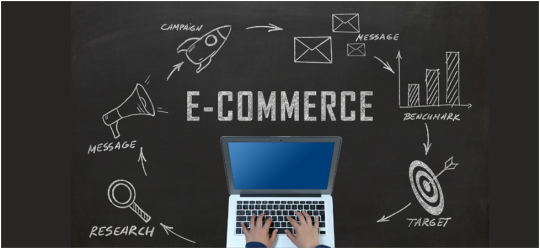
The Importance of Website Design for E-commerce
It is impossible to overestimate the importance of selecting web design for e-commerce. It affects a store's trustworthiness, but in an instant, it also creates the first image that new customers have of it. This highlights that website design is essential in determining customer behavior and e-commerce enterprises' performance. For example, a visually beautiful, user-friendly, and reliable website can result in higher consumer engagement, sales, and brand impression.
In addition to shop reputation and first impressions, good website design directly influences the success of online sales and marketing in the cutthroat world of e-commerce. It is essential to know the web design concepts. As a result, visitors will have a more satisfying and memorable experience, which is crucial for turning them into buyers. Beyond Animation offers a website designing course in Jaipur to help you improve your major skill of web design.
Another crucial component is social media marketing, search engine optimization (SEO), and website design. By combining these components, e-commerce companies may improve their online presence, drive more traffic to their websites, and eventually raise the probability that site visitors will become customers.
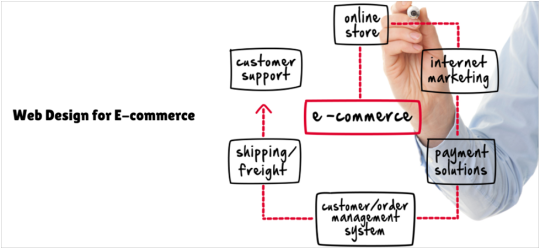
Best Practices Web Design for E-Commerce to Follow:
Your consumers' requirements will determine the style of your online business. Nevertheless, specific requirements apply to all industries.
Consider User Experience When Choosing Web Design for E-commerce.
Your web design for e-commerce is more than just how your shop looks; it's also about how it makes your consumers feel. Your online store has to offer a distinctive experience that forges an emotional bond between your customers and the products you sell. Customers should be able to easily explain their purchasing habits by seeing what you offer in their everyday lives.
Gorgeous images and vibrant colors are great, but the most significant influence comes from prioritizing the client's needs. After a positive user experience, clients are 400% more likely to finish their orders and become loyal customers.
Match brand identity with Web design.
Your e-commerce website is a brand, not just a place to shop. Designing with your brand in mind will guarantee that your store represents a value proposition that attracts leads, promotes customer loyalty, and makes your website stand out. A well-executed design uses consistent language and visuals to tell your brand's narrative. Find out what kinds of product images, fonts, iconography, and color palettes your customers find attractive. Want to do training in web design? Beyond Animation Web Design Institute in Jaipur offers you the best courses on a budget.

Keep informed with Web Design trends.
Due to technological advances, web design for e-commerce is still changing. Data-driven product suggestions, dynamic websites, and interactive design are emerging trends. Customers demand an easy-to-use online experience that lets them browse merchandise, make purchases, and follow orders.
Make mobile-friendly changes.
Customers frequently switch between devices when they purchase online. Using a logical, unified design for mobile devices—desktops, smartphones, and tablets—creates a memorable experience that encourages customers to enter your business. If your web design for e-commerce is not responsive to mobile devices, you may lose out on potential customers. After a bad mobile experience, more than half of users are less inclined to engage with a business, and 67% are more likely to purchase from a store that has a responsive design.
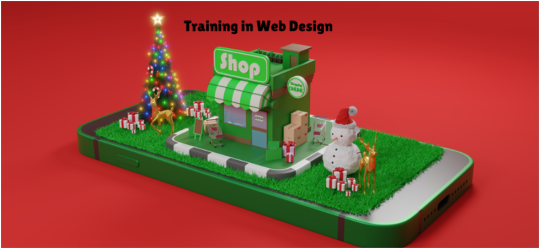
The effect of web design on your e-commerce website
creates a powerful first impression
Web design for e-commerce creates a powerful first impression. The way the website is designed has a significant impact on this perception. Well-organized and professional-looking designs create a positive impression on the customer. However, an unprofessional and poor design comes off as and may turn off the customers.
Having a well-designed website makes you stand out from the crowd.
Numerous industries face intense competition. Your website has to be well-designed if you want to differentiate yourself from the competition. A polished and eye-catching design may significantly attract people to your website and encourage them to purchase. Graphic design also plays a very important role in attractive website design. Take a graphic designing course in Jaipur and learn from the experienced faculty of Beyond Animation.
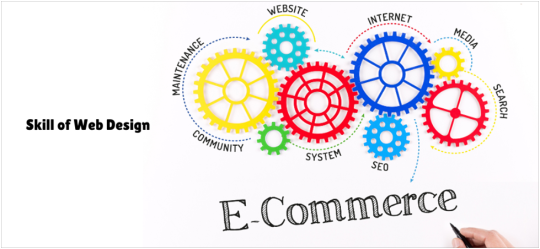
Attracts more people to your website
A well-designed website will rank higher in search results, increasing the number of individuals who may find and visit it. Web design and SEO should be considered equally and integrated in order to have a successful website. A few things that need to line up include search engine optimization (SEO), the website's content, responsiveness across various platforms, and the user experience.
It is easier for customers to do business with you when your website is well-designed.
A well-designed website should allow customers to transact business with you swiftly and effortlessly. This often indicates that users can quickly locate the information they need and may quickly contact you via phone or email. However, customers may get irritated and choose to conduct business with someone else if they are unable to locate information on your website or to do business with you.
In the competitive world of e-commerce, effective web design for e-commerce plays a vital role in establishing a solid online presence, enhancing user experience, and driving business growth. Visit Website :-
#graphicdesigningcourseinjaipur#webdesigningcourseinjaipur#photoshopcourseinjaipur#animationcourseinjaipur
0 notes
Text
The Importance of Logos for a Strong Brand Identity
The logo is a crucial component of your brand identification. A logo is a symbol that reflects your brand's essence, ownership, vision, and personality. Think about it. How many brands are you able to recognize simply by their logo? A well-designed logo becomes more than just decoration—it becomes an essential component of your brand's story.
A brand's logo can reveal much about its personality. Every logo component, such as the font, colours, and icons, is essential and purposefully used to set a specific mood.

The history of logo design can be found in ancient civilizations such as Egypt and China. The Chinese created characters representing words and concepts, while the Egyptians depicted their Pharaohs and gods with hieroglyphics. These ancient symbols first made the use of images to communicate meaning and identity possible.
Why do you need a logo? Because it draws attention, creates a lasting impression, forms the basis of your brand identity, is memorable, marks you apart from the competitors, encourages brand loyalty, and is something your audience expects. Visit Beyond Animation for a graphic designing course in Jaipur and learn how to make extraordinary logos.
Let's discuss the several ways a logo affects the success of your brand and explore the Importance of logos further.
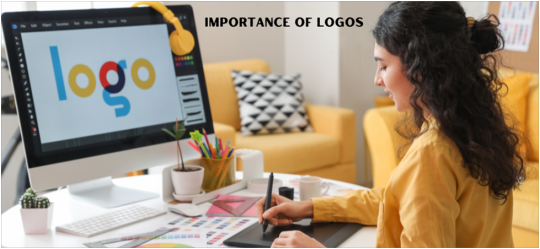
What is a logo? - Importance of Logos
A logo combines text and graphic elements that serve two purposes. Some logos are strongly associated with people's memories on a symbolic level. For example, you may recognize that KFC represents the fast food chain without needing to read "KFC." That shows the Importance of logos.
Importance of Logos Creating a Powerful Logo -
Grabs Attention & Maintains Attention
Our attention spans are growing shorter; thus, designing your logo with this in mind is essential. If they remember your logo right away, it will be remembered. Within the first few seconds, if your logo is difficult to read, visitors will become uninterested. On the other hand, a well-designed logo can create a negative first impression, pushing potential customers away before they even give your brand a chance.
First Impression is Important
As your company's public face, your logo's design must provide a strong initial impression that reflects its Importance. Your logo should instantly convey your company's offerings to prospective customers as it serves as their initial point of contact with you. It must captivate, establish credibility, and educate to compel readers to ask more questions.

Makes You Stand Out from the Competition
You can see the Importance of logos when it separates you from your competition and grabs all your attention. Since your company is unique, you must ensure that the design of your logo is as well. Make a statement and explain to potential clients why your business is unique by using your Evolution of Logo Design. Your beliefs and mission are communicated, together with the details of your firm, when the appropriate icon, typeface, and colour scheme are used together. Dare to stand out from the crowd and convince them of your greatness.
Logo Increases Loyalty
Genuinely, logos increase brand loyalty. First views lead to impressions made, leading to a lasting impression, a desire to try, and a positive experience following purchase, retention, and loyalty.
How do I get the logo - Importance of Logos
The best way to get a logo is to be professionally designed by professional graphic designers. Despite the availability of inexpensive online logo design services, we have found that small local print and graphic design firms offer the best value and quality of service. Choosing a small freelance graphic designer or a print shop with an in-house designer can save you thousands of rupees compared to giant design firms or advertising agencies while still providing you with a high-quality logo and personalized service. You can get exceptional rates by hiring these tiny design services to create your business cards, stationery, and logo. You can get the best deals. You may also master brand consistency with this.

Impact of Bad Logo - Importance of Logos
If customers aren't on board or don't understand the purpose and what it means for the brand, customer detachment can be bad for brand loyalty.
Here are some points that make a logo bad:
Overly weird
Too artsy and complicated
Poor colour selection & shapes
The challenge to read all at once
difficult to identify letters
It is highly similar to another logo
too often changes (too hard to build loyalty)
Not in keeping with the message of the brand

Essential Elements of Logo - Importance of Logos
A few elements should work together while choosing how to design a logo to establish your unique style. While some logos use every element, others only use some of them. Understanding these concepts is critical to selecting the one that will work best for your business, regardless of which one you decide to incorporate into your logo. The secret to a great logo is to keep it basic and attempt to convey the essence of your brand. To stay up to date and get ideas, you should be informed of current trends in logo design process. While adding the newest trends to your logo could seem like a brilliant idea, you should first think about whether that design will be able to evolve with your business and stay current over time.
Conclusion - Importance of Logos
In branding, a logo is essential for all companies, regardless of size. Paying attention to emotional connection, distinction and brand awareness is important for the overall success. We cant overestimate the Importance of logo since it helps a business stand out in a competitive market, develop brand identification, and build confidence. Companies that invest in creating a solid logo strategy will benefit from having a strong brand presence that appeals to their target market. Visit Website :-
#graphicdesigningcourseinjaipur#webdesigningcourseinjaipur#photoshopcourseinjaipur#animationcourseinjaipur
0 notes